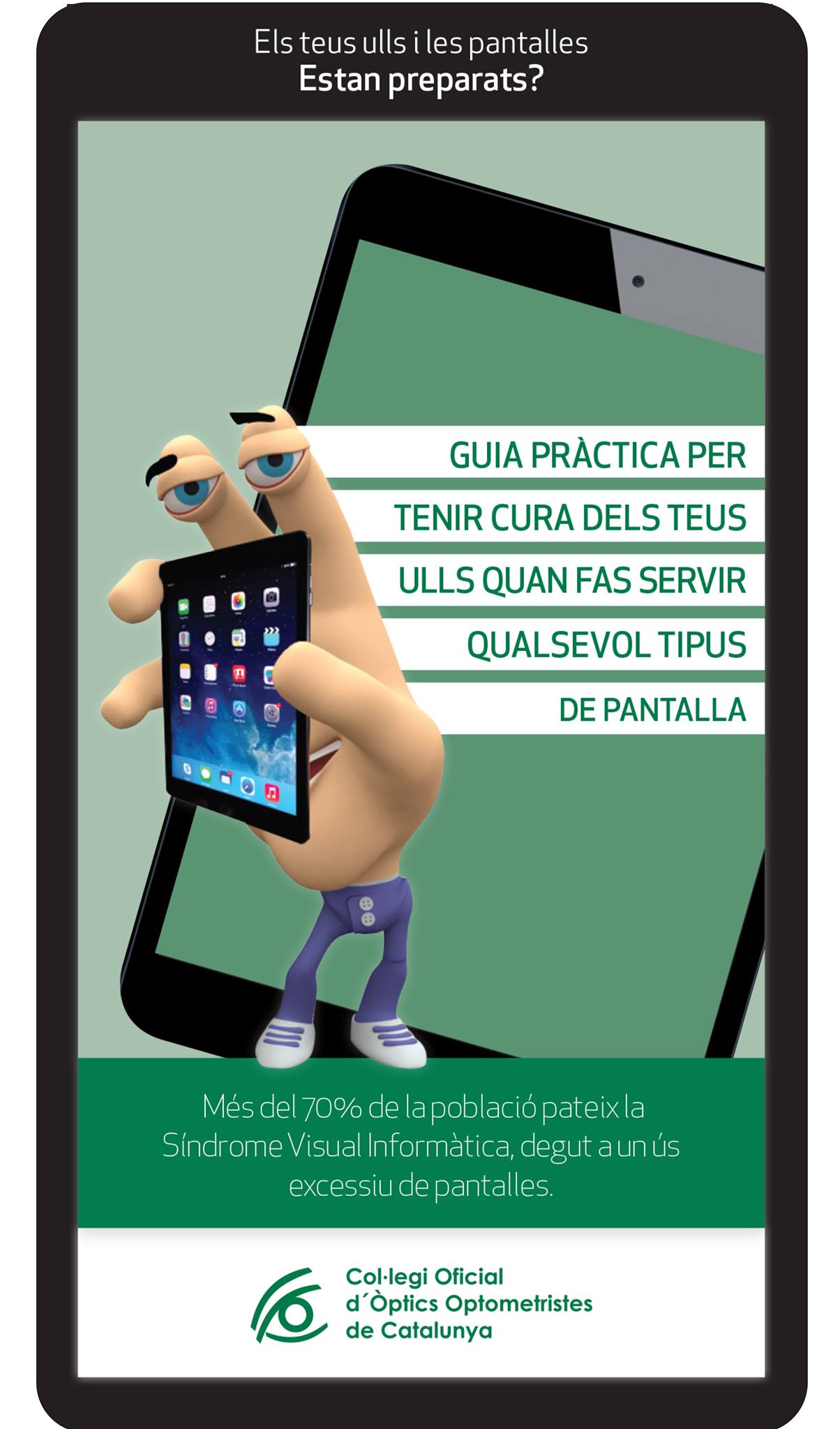Too many hours in front of the screen
30/09/2014
A report by the College of Opticians Optometrists of Catalonia warning that children under 30 years spend five times more time and recommended that more than 70% of the population suffers from the state computer vision syndrome.
Televisions, computers, tablets, mobile phones ... Our exposure to screens is constant and in recent years has increased to the point of being excessive, as a report warning of the College of Opticians of Optometrists Catalonia (COOOC), presented at a press conference Tuesday. After surveying a total of 1,400 people in Spain between 14 and 70 years, the study concludes that "the majority of the population spends more time looking at a screen that would be recommended, two hours a day at the most. "
Thus, the data indicate that under 30 spend 10.5 hours a day in front of a screen-more than five times the maximum recomanat- that people between 31 and 45 spend 9.3 hours and the exposure time of over 60 years is 3.8 hours. These figures COOOC President Alfons Bielsa is considered "outrageous."
This exposure causes what is known as computer vision syndrome (SVI), which affects 70% of the population of the state. The main symptoms of this syndrome are bruised, usually temporary, such as visual fatigue (49% of cases), dry (27%), itching (24%), blurred vision (20%), flushing (10%) lacrimation (9%) or double vision (2%). "This affects our well-being and performance," said the dean of the School of Optometry at the Polytechnic University of Catalonia (UPC), Terrassa, John Gispets.
Key elements: distance, light and flickering
Beyond reducing the exposure time, Gispets highlighted other factors to be taken into account to avoid SVI: distance, light and flickering. "The human eye is designed to see it from afar," he said, so looking at a very short distance (as in the case of mobile phones: between 20 and 25 centimeters) causes a greater effort approach. If this situation lasts in time, we are making an effort and run the risk of myopia.
The effort also is excessive if we look at a strong light source directly unnatural, and reduces flicker when spent many hours in front of a screen (5 for 20-25 minutes), especially when we play video games, which also reduces the tear secretion. "It's a stare that greatly increases the evaporation of the tear, causing dry eyes and itching and irritation, among other symptoms," said the dean.
In the press have raised a number of tips to reduce SVI , such as the use of large screens, blinking voluntary or forced prevent glare on the screen.
A cause of school failure?
While Alfons Bielsa stated that this syndrome "compounded if the person suffers from a visual disturbance" Gispets warned that, beyond the inconvenience, "there are visual problems that result from excessive exposure to the screens" . Although these problems from a "genetic predisposition," he said, also have to do the "environmental conditions", a situation that is exacerbated in the case of children, exposed children from all types of screens.
Although there is not much scientific evidence, the dean of the UPC works with the hypothesis that there is a relationship between visual efficiency problems and difficulties in learning and academic performance of children. "If from improving visual capabilities, improved the performance," he predicted.
We can reverse this situation ?: awareness campaign
According Gispets, "if there is a big setback," overexposure screens irreversible. It is therefore recommended to increase education among the population, especially among parents, because it "happens to a minimum." In this sense, the COOOC and UPC have launched the campaign 'Vision and screens', which aims "to be awareness about good vision and eye adapt to changes since the introduction of screens" as explained Vice President of the College, Louis Bielsa. "A clear vision is not to good vision," said Alfons Bielsa, and also said that the eyes need to move in a coordinated way, to have a good 3D vision or visual perception, among others.
The backbone of the campaign is its website , which explains the causes and symptoms of computer vision syndrome, offered tips to avoid it and raised three vision tests and a questionnaire to find out if user suffers from the syndrome. Furthermore, 500 will receive optical information leaflets and teaching and the problems will spread through Facebook and Twitter, where it is expected the participation of 1,500 Catalan optometry.
'Vision and screens' is the third campaign COOOC with Victor, "the first optometry dimensional world.' Previously 'Live in 3D!' marked the first test of binocular vision that came to theaters, and 'Vision and Learning' campaign was about 300 schools to detect visually impaired students. 








